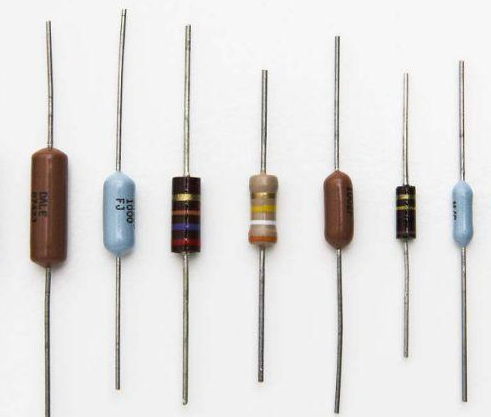In the field of discussing electronic components, photoresistors undoubtedly occupy a crucial position. Their working principles and performance parameters directly affect the efficiency and accuracy of applications such as photoelectric sensors and automatic control systems. This article aims to provide an in-depth analysis of the basic characteristics of photoresistors and their main parameters, providing a comprehensive and in-depth guide for engineers and R&D personnel.
Dark resistance and light resistance: core characteristics of photoresistor
The working principle of a photoresistor is based on its change in sensitivity to light. Under no light (total darkness) conditions, the resistance value of the photoresistor reaches its highest value, which is called dark resistance, and the related current is called dark current. Taking the MG41-21 photoresistor as an example, its dark resistance value is greater than or equal to 0.1MΩ, indicating that the current flowing through the resistor in a dark environment is extremely small. This is because the conductivity of the photosensitive material decreases significantly in the absence of light. On the contrary, in an environment with light, the resistance value of the photoresistor decreases significantly, reaching the so-called bright resistance value, and the corresponding current is called bright current. For example, the bright resistance value of the same model of photoresistor under light conditions is less than or equal to 1kΩ, showing a significant improvement in conductivity under light conditions. This contrast between dark resistance and light resistance is an important indicator of the sensitivity of the photoresistor. Ideally, the dark resistance value is high and the light resistance value is low to ensure that the photoresistor has good responsiveness under changing lighting conditions.
Volt-ampere characteristics: an important parameter describing the relationship between voltage and current
The volt-ampere characteristic of a photoresistor is an important parameter that describes the relationship between the voltage across the resistor and the current through the resistor under specific lighting conditions. This characteristic not only reveals the response characteristics of the photoresistor, but is also an important reference when designing photoelectric sensing systems. The volt-ampere characteristic curve can provide engineers with the working status of the resistor under different voltages, and then optimize the circuit design to adapt to specific application requirements.

Spectral properties: the key to choosing the right photosensitive material
Light of different wavelengths has different effects on photoresistor, which is the so-called spectral characteristics. The spectral characteristics not only reflect the response sensitivity of the photoresistor to light of a specific wavelength, but also provide an important basis for the selection of photoresistor materials in specific applications. For example, cadmium sulfide photoresistors are most sensitive to the visible light region, while lead sulfide photoresistors show higher sensitivity in the infrared region. Therefore, selecting the appropriate photoresistor material based on the characteristics of the light source in the application is the key to achieving efficient photoelectric conversion.
Frequency Characteristics: A measure of the response speed of a photoresistor
The frequency characteristics of a photoresistor describe how quickly it responds to changes in light intensity. Photoresistors of different materials have differences in frequency response, which directly affects the application of photoresistors under rapidly changing lighting conditions. The time delay characteristic, that is, the time it takes for the photoresistor to receive a change in light and stabilize the current, is an important aspect of the frequency characteristics. Although the large time delay characteristics of most photoresistors limit their use in high-speed applications, this limitation can be partially overcome by selecting materials with faster response times.
By in-depth understanding of these basic characteristics and main parameters of photoresistors, developers and engineers can better select and design photoresistors suitable for their specific application needs. On this basis, combined with innovative design ideas and advanced technical solutions, the performance and reliability of the photoelectric sensing system can be effectively improved and further promote the development of electronic component technology.
